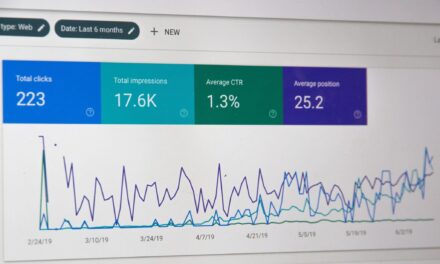Summary. Effective B2B marketing strategies and tactics focus on audience understanding, channel selection, and impactful content creation. Key approaches include blogs, SEO, social media, whitepapers, email, and video, with personalisation and thought leadership essential for successful B2B marketing.
Want to understand more about B2B business marketing? Relax, grab a coffee, you’ve come to the right place. We’ll look at the strategies it uses, and how to be successful with it in the current market. Let’s delve deeper into the most successful contemporary B2B marketing tactics.
What is B2B Business Marketing?
From B2C marketing, which is focused on customers, in a number of important ways. Business-to-business marketing, as its name suggests, refers to the promotion of goods and services to other organisations and businesses. It differs significantly
Broadly speaking, compared to B2C marketing content, B2B tends to be more basic and informational. This is because, in contrast to consumer purchases, business purchases are more heavily influenced by the impact on bottom-line revenue. In terms of money, return on investment (ROI) is rarely a factor for the average person, but it’s a top priority for business decision-makers.
B2B marketers frequently sell to buying committees comprising a variety of important stakeholders. This results in a complicated and occasionally difficult environment. But, as data sources get more reliable and accurate, B2B marketers’ capacity to identify committees and provide customers with pertinent, individualised information has significantly increased.
Who is B2B Marketing For?
Any business that sells to other businesses. B2B can take on a variety of shapes, including subscriptions to software-as-a-service (SaaS), security solutions, tools, accessories, office supplies and more. Many businesses operate in both the B2B and B2C sectors.
B2B marketing efforts are directed towards anyone who has influence over or control over purchase decisions. From entry-level end users all the way up to the C-suite, this might include a wide range of titles and responsibilities.
Related: What is B2B Lead Generation?
How to Create a B2B Marketing Strategy
Competition for customers, and their attention, is high. Building out a B2B strategy that delivers results requires thoughtful planning, execution, and management. Here’s a high-level look at the process B2B companies use to stand out in a crowded marketplace:
Step 1: Develop a Clear Vision
Fail to plan, plan to fail. This statement is unchangingly true. You should choose defined and measurable business objectives before you start cranking out advertisements and content. After that, you should create or adopt a structure for how your B2B marketing plan will accomplish goals.
Step 2: Identify Your Audience and Buyer Persona
For B2B businesses, this phase is very important. B2B products and services are typically targeted to a specific group of clients with specific pain points and wants, as opposed to B2C goods, which frequently have a wider and more general audience. You’ll be able to speak to them personally and with pertinent messaging the better you can define this group.
We advise developing a profile for your target customer. To create a list of characteristics you can match against prospects to qualify leads, do demographic research, industry interviews, and customer analysis on your top clients.
Step 3: Determine B2B Marketing Tactics and Channels
You must decide how and where to reach your target audience after gathering reliable information about them. Your understanding from the prior stage should assist direct this one. You’ll want to answer questions like these about your ideal customers and prospects:
- Where do they hang out online?
- What questions are they asking search engines?
- Which social media platforms do they use?
- How can you help where your competitors can’t?
Step 4: Create Assets and Run Campaigns
It’s time to execute the plan now that you’ve put it in place. Follow best practices for each channel you incorporate into your b2b marketing strategy. Effective campaigns must have a creative strategy, practical insights, sophisticated targeting, and compelling calls to action.
Step 5: Measure and Improve
This process is what keeps you moving in the right direction over time. Simply put, you want to discover the differences between your high-performing content and your low-performing material in order to improve both. If you comprehend this, you will allocate your time and money more shrewdly. You are more likely to continuously grow and achieve your goals if you are attentive about consulting analytics and putting what you’ve learned into practice.
Even with a solid research base, developing content and campaigns always involves a significant amount of guessing until you have reliable engagement and conversion metrics to lean on.
Allow your audience to direct your steps. Consult stats to identify the media, subjects, and channels that are most popular, then focus more. Cut or change anything that isn’t working in the meantime.
B2B Marketing Strategies and Content Types
Here are a few of the most common B2B business marketing tactics and content formats worth considering for your strategy:
Blogs are an essential part of practically every content team. Regularly updated blogs increase your site’s inbound traffic and give you organic visibility. Varying content types and formats can be included in your blog.
Search: It can be challenging to operate in an environment where SEO best practices are changing as frequently as Google’s algorithm, but every B2B marketing strategy must take this into consideration. Recently, searcher intent signals have become more important than keywords and metadata.
Social Media: Both paid and organic content should be included. You may connect with and interact with prospects on social networks, where they are engaged. These channels are increasingly being used by B2B buyers to investigate potential vendors before making decisions.
Whitepapers, eBooks, and infographics: Downloadable standalone assets can either be gated (requiring a user to enter contact information or complete another activity in order to access) or ungated. They offer valuable information and are frequently used to generate B2B leads.
Email: Email isn’t going away any time soon, in spite of spam filters and inbox shock it’s still an effective B2B tool that should be uses in your marketing tactics.
Video: This form of content can be used in many of the previously listed categories (blogs, social media, emails), but it deserves special attention because it is the foundation of numerous effective B2B marketing tactics.
Case studies and customer testimonials: Credibility building is essential for B2B marketing strategists. Even while case studies and client reviews aren’t the most imaginative endeavours, they’re nevertheless important.
Podcasts: The popularity of podcasting is predicted to increase much further. Do you have a podcast targeted at business people? Considering launching one? Promote your podcast on social platforms to increase the number of listeners.
Related: Digital Marketing Ideas For Engineering Firms
B2B Marketing Best Practices
How can you position yourself for success in B2B marketing? Here are a few tried-and-true pillars that will make you distinctive and effective.
Be Human
Yes, you’re attempting to win over a business as a client, but you are still attempting to communicate with genuine individuals who work for the business, and like all people, they are motivated by both emotional and rational factors.
Don’t limit your research to the businesses and accounts you are chasing. Make sure your marketing speaks to them by learning about the individuals who inhabit them. Business decisions may tend to be more logical and rational, but that doesn’t imply your writing should be impersonal.
Keep in Mind Both Precision and Volume
A number of stakeholders affect the majority of B2B purchasing choices. Targeting errors frequently occur when attempting to identify the decision maker. However, that lone decision-maker doesn’t exist in almost all instances. To reach every stakeholder who might have an impact on the purchasing decision is crucial.
B2B buying cycles are complicated, and stakeholders frequently change their roles and responsibilities. This is just one of the many factors that influence brand recognition. B2B marketers can connect with decision-makers who can both influence and authorise purchases.
Thought Leadership is Impactful
According to research, senior-level decision makers respect thought leadership information, and use it to evaluate suppliers and products. The majority spend at least one hour per week reading thought leadership content. Additionally, B2B decision makers are willing to pay more if it implies they are dealing with a business that has established a distinct future vision through the use of thought leadership.
Context is Key
Personalisation and relevance are prerequisites for turning heads and maintaining interest today. Yes, you want to speak the language of your customers, but you also want to deliver content and ads that fit thematically with where they’re viewed.
For instance, shorter videos with quick hooks perform better on social media feeds, whereas a longer format is probably better suited for YouTube. To stop the scroll on LinkedIn, a distinct copy angle is required. Consider yourself the end user. Consider your audience’s “surroundings” as they are currently experiencing your content in order to better match your message to their perspective.
B2B Marketing in a Nutshell
Here are some crucial points to bear in mind as we summarise the most significant lessons learned from our exploration of modern B2B business marketing:
- Despite the fact that it is business-to-business marketing, you are still talking with people. The most successful B2B marketers combine reason and feeling.
- Being clear on your vision, defining your audience, choosing methods and channels, launching content and campaigns, and then continuously measuring for optimisation are the fundamental phases in developing a B2B marketing plan.
- When targeting, balance precision with volume to ensure you’re reaching all of the most important decision-making stakeholders.
- The gold standard of B2B marketing is conversational, targeted, and contextually relevant.
- Thought leadership material can provide you a competitive edge, but it can also backfire if it doesn’t live up to expectations.
Ready to find out how digital marketing can help your business? Contact Sarah today at sarah@aiminternet.co.uk or call her on 07816071112.
To read the original article please see here





